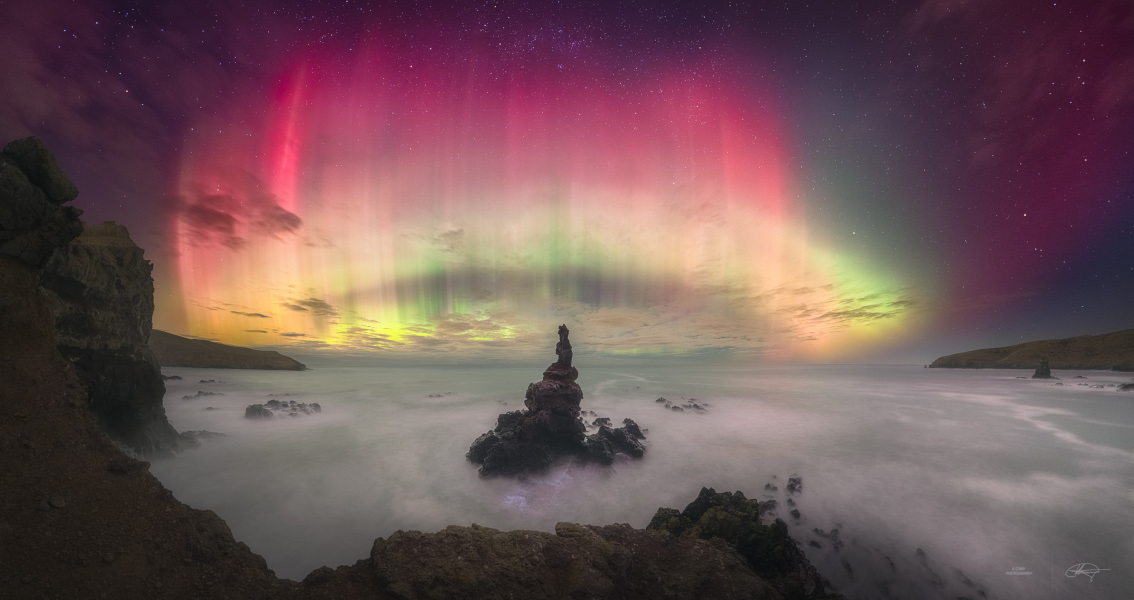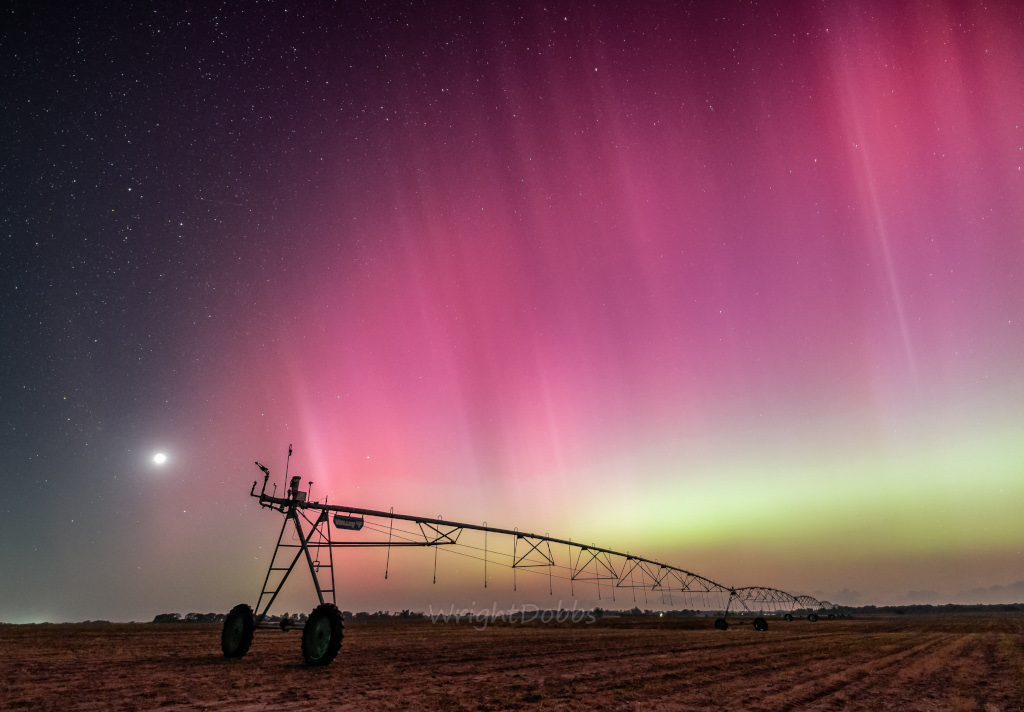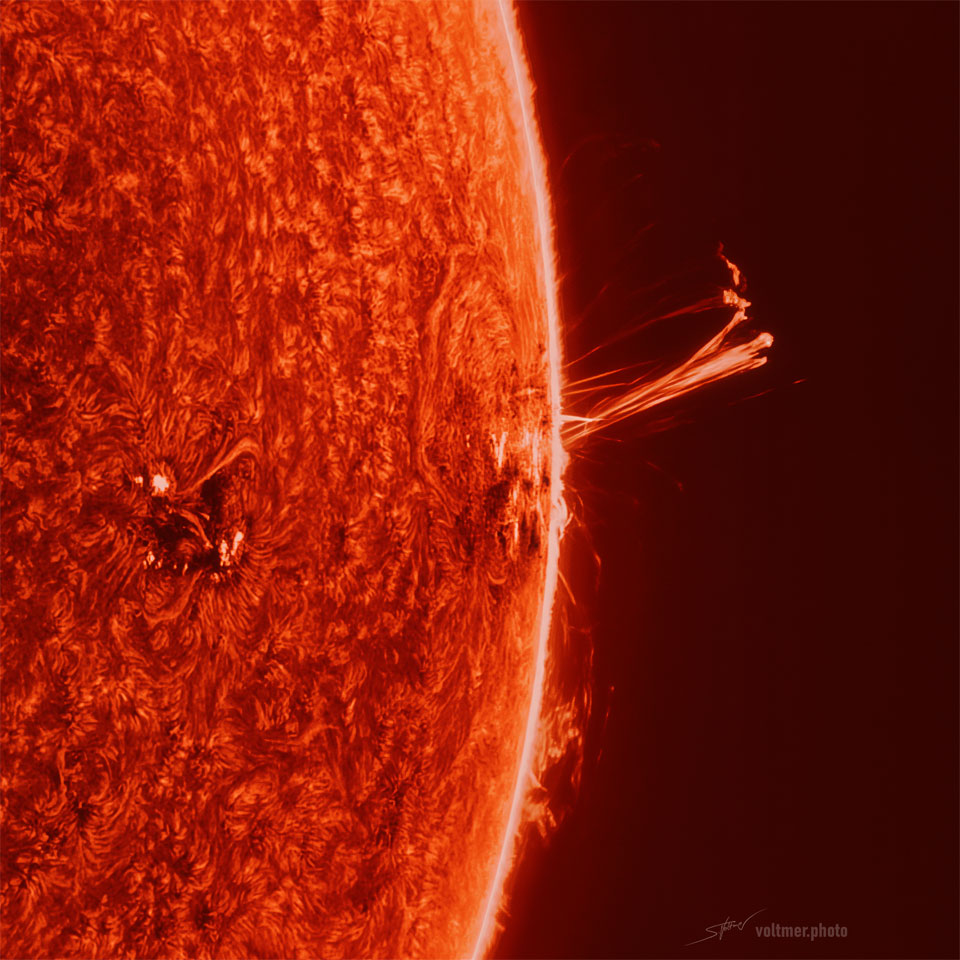Nombre total de pages vues
17/05/2024
SANTé/MEDECINE - Virus et bactéries mortels - Le virus de l’hépatite B, cette MST terriblement infectieuse
NUCLEAIRE - Comment survivre à une explosion nucléaire ? - Comment l'information est divulguée ?
ASTRONOMY - Aurora Banks Peninsula
2024 May 17
Image Credit & Copyright: Kavan Chay
Explanation: This well-composed composite panoramic view looks due south from Banks Peninsula near Christchurch on New Zealand's South Island. The base of a tower-like rocky sea stack is awash in the foreground, with stars of the Southern Cross at the top of the frame and planet Earth's south celestial pole near center. Still, captured on May 11, vibrant aurora australis dominate the starry southern sea and skyscape. The shimmering southern lights were part of extensive auroral displays that entertained skywatchers in northern and southern hemispheres around planet Earth, caused by intense geomagnetic storms. The extreme spaceweather was triggered by the impact of coronal mass ejections launched from powerful solar active region AR 3664.
16/05/2024
SANTé/MEDECINE - Virus et bactéries mortels - Neisseria meningitidis le principal responsable
NUCLEAIRE - Comment survivre à l'explosion nucléaire ? Combien de temps après l'annonce ?
ASTRONOMY - Aurora Georgia
2024 May 16
Image Credit & Copyright: Wright Dobbs
Explanation: A familiar sight from Georgia, USA, the Moon sets near the western horizon in this rural night skyscape. Captured on May 10 before local midnight, the image overexposes the Moon's bright waning crescent at left in the frame. A long irrigation rig stretches across farmland about 15 miles north of the city of Bainbridge. Shimmering curtains of aurora shine across the starry sky though, definitely an unfamiliar sight for southern Georgia nights. Last weekend, extreme geomagnetic storms triggered by the recent intense activity from solar active region AR 3664 brought epic displays of aurora, usually seen closer to the poles, to southern Georgia and even lower latitudes on planet Earth. As solar activity ramps up, more storms are possible.
15/05/2024
SANTé/MEDECINE - Virus et bactéries mortels - Le staphylocoque doré terreur des hôpitaux
NUCLEAIRE - Comment survivre à une explosion nucléaire ? Différents dangers
ASTRONOMY - AR 3664 at the Sun's Edge
2024 May 15
Image Credit & Copyright: Sebastian Voltmer
Explanation: What did the monster active region that created the recent auroras look like when at the Sun's edge? There, AR 3664 better showed its 3D structure. Pictured, a large multi-pronged solar prominence was captured extending from chaotic sunspot region AR 3664 out into space, just one example of the particle clouds ejected from this violent solar region. The Earth could easily fit under this long-extended prominence. The featured image was captured two days ago from this constantly changing region. Yesterday, the strongest solar flare in years was expelled (not shown), a blast classified in the upper X-class. Ultraviolet light from that flare quickly hit the Earth's atmosphere and caused shortwave radio blackouts across both North and South America. Although now rotated to be facing slightly away from the Earth, particles from AR 3664 and subsequent coronal mass ejections (CMEs) might still follow curved magnetic field lines across the inner Solar System and create more Earthly auroras.
14/05/2024
ASTRONOMIE - Astres de la voie lactée - GJ 436b, une géante gazeuse
ASTRONOMY - The Observable Universe
2025 November 23 The Observable Universe Illustration Credit & Licence : Wikipedia , Pablo Carlos Budassi Explanation: How far can ...

-
2022 September 26 All the Water on Planet Earth Illustration Credit: Jack Cook, Adam Nieman, Woods Hole Oceanographic Institution ; Data ...
-
2025 May 11 The Surface of Venus from Venera 14 Image Credit: Soviet Planetary Exploration Program , Venera 14 ; Processing & Copyri...









